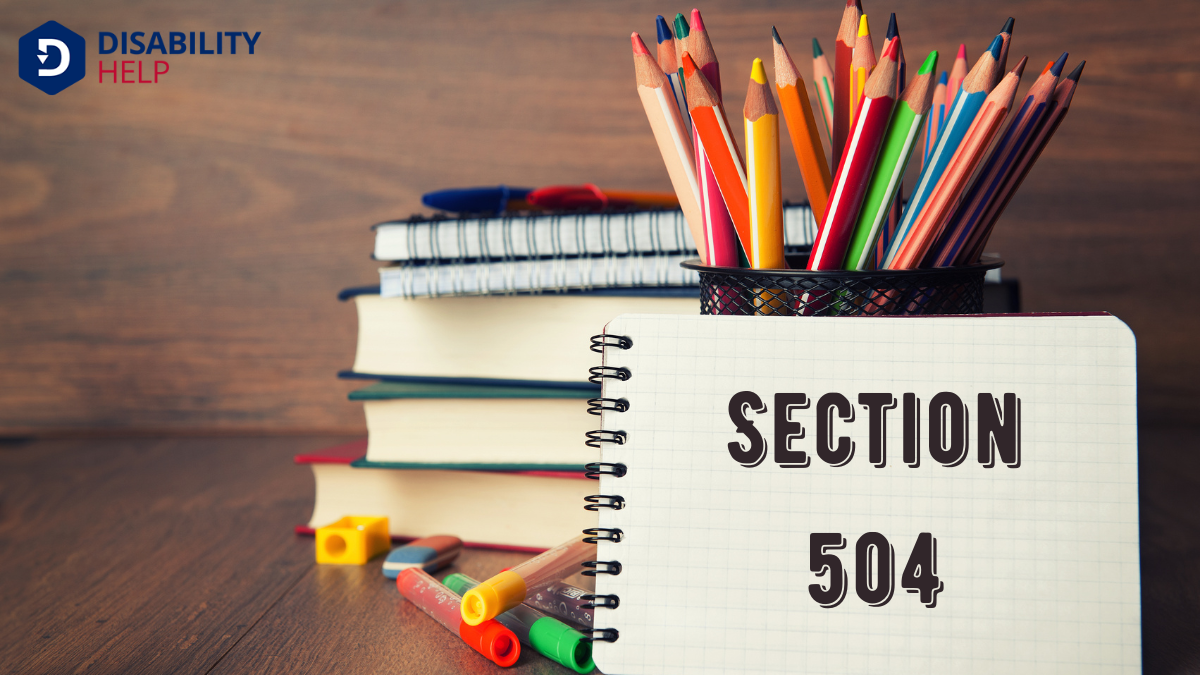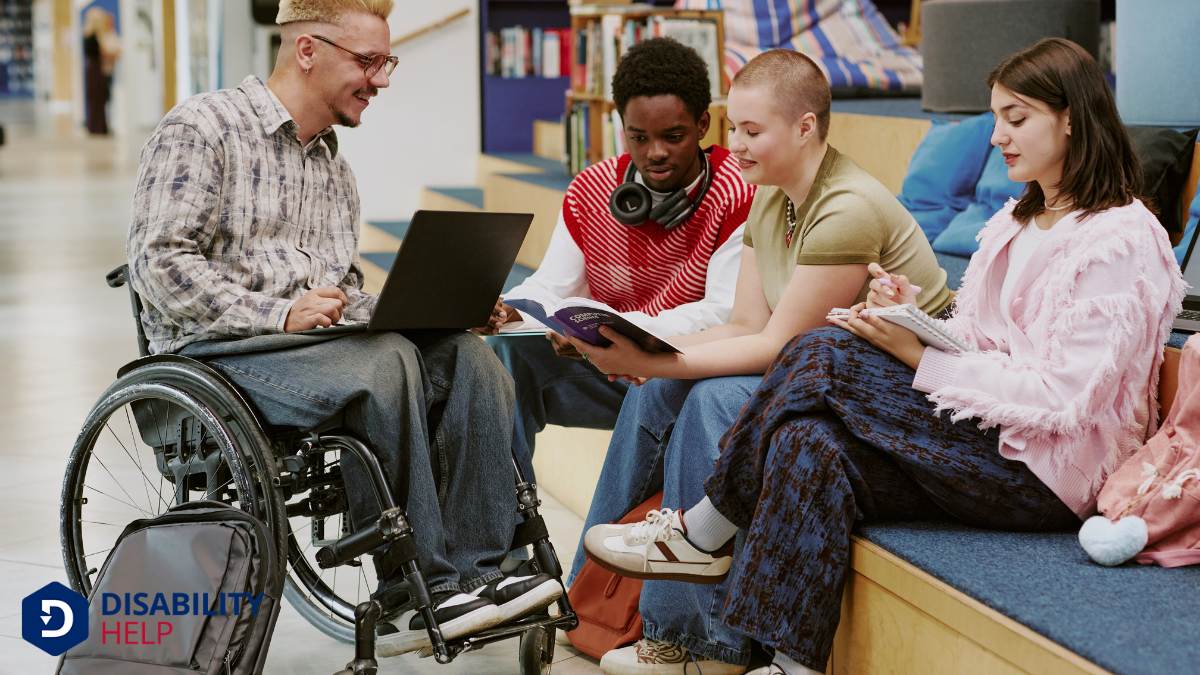When we think about how students with disabilities are protected in schools, we're really talking about a framework that guarantees their rights and needs are met. Laws like the Individuals With Disabilities Education Act (IDEA) and Section 504A provision of the Rehabilitation Act of 1973 that prohibits discrimination based on disability in p... are critical in this process. They help create inclusive environments and ensure that students receive the necessary support. But how do these laws translate into everyday actions in schools? Let's explore how this legal protection plays out in practice.
Key Takeaways
- The Individuals With Disabilities Education Act (IDEA) guarantees free appropriate public education for students with disabilities.
- Section 504 ensures equal educational access by mandating accommodationAdjustments or modifications provided to individuals with disabilities to ensure equal access and pa... plans for students with disabilities.
- Individualized Education Programs (IEPs) are developed collaboratively to meet unique student needs.
- Schools prioritize inclusive, accessible environments with assistive technologies to support learning.
- Regular evaluation and adaptation of support plans ensure effectiveness in meeting diverse needs.
Understanding the Individuals With Disabilities Education Act (IDEA)
When it comes to supporting students with disabilities, the Individuals With Disabilities Education Act (IDEA) is a cornerstone of educational policy in the United States. It guarantees that all children with disabilities have access to a free, appropriate public education tailored to their unique needs.
As educators and advocates, we recognize IDEA's role in providing individualized education programs (IEPs), which outline specific goals and accommodationsModifications or adjustments in healthcare settings to support patients with disabilities. for each student. We must work collaboratively with families and professionals to craft these IEPs, guaranteeing students receive the support they need to thrive.
IDEA also emphasizes inclusionThe practice of creating environments in which any individual or group can be and feel welcomed, res..., encouraging students to learn in the least restrictive environment possible.
We're committed to fostering an inclusive atmosphere where students with disabilities can participate alongside their peers, promoting both academic and social growth.
The Role of Section 504 in Schools

Let's explore how Section 504 supports students with disabilities by first understanding its eligibility criteria, which differ from those of IDEA.
We'll then look at how accommodation plans are crafted to guarantee every student has the necessary support to succeed.
Finally, we'll address the implementation challenges schools face and discuss ways to overcome them.
Eligibility Criteria Explained
To understand how students with disabilities can access accommodations in schools, we must explore the eligibility criteria outlined by Section 504 of the RehabilitationThe process of helping individuals with disabilities achieve and maintain their optimal physical, se... Act. This federal law guarantees that students with disabilities have equal accessThe principle that all individuals, including those with disabilities, should have equal opportunity... to education.
To qualify under Section 504, a student must have a physical or mental impairmentA loss or abnormality of a body structure or function, whether physical, mental, or sensory, often a... that greatly limits one or more major life activities, such as learning, walking, or communicating. The process begins with an evaluation, which might include input from teachers, parents, and medical professionals.
It's important we recognize that eligibility isn't solely about diagnosed conditions; rather, it's about the impact on the student's ability to learn and participate in school activities. By understanding these criteria, we can better support students in achieving their educational goals.
Accommodation Plans Overview
Although understanding eligibility is essential, it's equally important to explore the specifics of accommodation plans under Section 504.
These plans guarantee that students with disabilities receive the necessary support to thrive in school. Section 504, part of the Rehabilitation Act of 1973A U.S. law that prohibits discrimination based on disability in federal programs and services, inclu..., mandates schools to provide accommodations tailored to each student's unique needs.
We might see adjustments like extended test time, modified seating arrangements, or assistive technology.
Our goal is to create an equitable learning environment where everyone can succeed.
Implementation Challenges Addressed
Despite the benefits of Section 504, implementing these plans in schools often presents challenges that we must address.
We encounter difficulties such as insufficient training for staff, which can lead to misunderstandings about the required accommodations. Additionally, limited resources can make it hard to provide the necessary support for every student's unique needs.
We must also guarantee that communication between parents, teachers, and administrators is clear and consistent, which can sometimes be a hurdle.
To overcome these challenges, schools can focus on professional development, guaranteeing all staff understand their roles in supporting students with disabilities.
We should also advocate for increased funding and resources to better meet the diverse needs of our students.
Collaboration and open dialogue will help us create inclusive environments for everyone.
Implementing Individualized Education Programs (IEPs)
Crafting and implementing Individualized Education Programs (IEPs) is essential in ensuring that students with disabilities receive tailored support and opportunities for success.
We must collaborate with educators, parents, and specialists to design thorough, personalized plans addressing each student's unique needs. By setting specific goals and tracking progress, IEPs provide a structured framework that guides teachers and students alike.
We focus on identifying strengths and areas for improvement, ensuring that every child has the right resources and strategies to thrive.
Regular reviews of IEPs allow us to adaptA grassroots disability rights organization in the U.S. that focuses on promoting community-based se... to changes in a student's development or circumstances, ensuring continued alignment with their educational goals.
Together, we create an inclusive environment where all students can achieve their full potential.
Accommodations and Modifications in the Classroom
When we address the diverse needs of students with disabilities, implementing accommodations and modifications in the classroom becomes essential.
We recognize that each student learns differently, so we tailor our teaching strategies to support their success. Accommodations might include providing extra time on tests, offering audio versions of texts, or allowing the use of technology for note-taking.
Modifications, on the other hand, involve changing the curriculum itself, such as altering assignments or simplifying the material to match a student's learning level.
The Importance of Accessible Learning Environments

When we embrace universal designThe design of products, environments, and services to be usable by all people, to the greatest exten... principles, we create classrooms where every student can thrive, regardless of their abilities.
By integrating assistive technology, we guarantee that learning tools are accessible to all, leveling the playing field.
Let’s work together to build environments that support and empower every learner.
Universal Design Principles
Creating accessible learning environments is essential to ensuring all students, including those with disabilities, can thrive in educational settings. Universal Design Principles guide us in developing spaces and curricula that accommodate diverse needs from the start, rather than as an afterthought.
By considering physical layout, instructional materials, and teaching strategies, we make education more inclusive. For instance, flexible furniture arrangements allow mobility for everyone.
We can provide materials in varied formats—audio, visual, and tactile—to cater to different learning styles. When we design lessons that engage multiple senses, we help students grasp concepts more effectively.
Let's prioritize accessibilityThe design of products, devices, services, or environments to be usable by people with disabilities.... not just for compliance, but because every student deserves an equal opportunity to succeed. Together, we can transform our educational landscapes.
Assistive Technology Integration
While we endeavor to create inclusive classrooms, integrating assistive technology is essential for ensuring students with disabilities have equal access to learning opportunities. These tools can transform how students engage with curriculum, bridging gaps that traditional methods might overlook.
For instance, text-to-speech software allows students with reading difficulties to access content independently, while speech recognition helps those with writing challenges express their ideas.
We must prioritize understanding each student's unique needs to select the right technology. Collaboration with educators, parents, and specialists is key to this process.
The Role of Teachers and Support Staff
In our efforts to support students with disabilities, teachers and support staff play pivotal roles in fostering an inclusive educational environment. We guarantee that all students feel valued and empowered to succeed.
Our responsibilities include:
- Tailoring Instruction: We adapt teaching methods to meet diverse learning needs, guaranteeing each student can access the curriculum.
- Providing Support: By offering personalized assistance, we help students overcome challenges and build confidence.
- Collaborating: We work closely with parents, specialists, and the students themselves to create effective educational plans.
- Creating Safe Spaces: We cultivate an atmosphere of respect and understanding, where all students can express themselves freely.
Addressing Challenges and Promoting Inclusivity
Addressing challenges and promoting inclusivity in schools is essential to guarantee every student thrives.
We must recognize that students with disabilities often face barriers that impede their learning experiences. By fostering an environment of understanding and acceptance, we can break down these barriers.
It’s imperative that we provide teachers with the right tools and training to meet diverse needs. This includes implementing individualized education plans and using assistive technologies.
Let's not forget the importance of open communication among educators, parents, and students. By working together, we can create a supportive network that benefits everyone.
Encouraging peer interactions and promoting awareness programs also play a significant role. As a community, we can make sure that inclusivity isn’t just a policy but a practiced reality.
Frequently Asked Questions
How Do Schools Handle Bullying of Students With Disabilities?
We guarantee schools actively address bullying of students with disabilities by implementing strict anti-bullying policies. Teachers and staff receive training to recognize and intervene, fostering an inclusive environment where all students feel safe and supported. Let's work together.
What Are the Rights of Parents in Advocating for Their Disabled Child?
As parents, we have the right to advocate for our child's needs. We can request assessments, participate in IEP meetings, and access records. It's important to stay informed and work collaboratively with the school for our child's success.
Are There Resources for Students With Disabilities Transitioning to College?
Yes, there are resources available. We can explore college disability services, scholarship opportunities, and changeover programs. Let’s connect with advisors and support networks to guarantee a smooth changeover for students with disabilities entering college.
How Can Students With Disabilities Participate in Extracurricular Activities?
Let's guarantee all students, including those with disabilities, have equal access to extracurricular activities. We can advocate for inclusive programs, adaptive equipmentDevices that assist individuals with disabilities in performing ADLs, such as grab bars or shower ch..., and supportive staff to create environments where everyone participates and thrives together.
What Are the Legal Consequences for Schools Not Complying With Disability Laws?
If schools don’t comply with disability laws, they risk legal actions, loss of federal funding, and damage to their reputation. Let’s guarantee we hold them accountable to create inclusive environments for all students.
Conclusion
In our schools, we're committed to guaranteeing that students with disabilities receive the support and resources they need to thrive. By understanding and implementing IDEA and Section 504, we create inclusive environments where every student can succeed. Through IEPs, accommodations, and support from dedicated teachers and staff, we address individual needs and promote academic and social growth. Let's continue to work together to overcome challenges and guarantee equal opportunities for all students, fostering a truly inclusive educational community.






